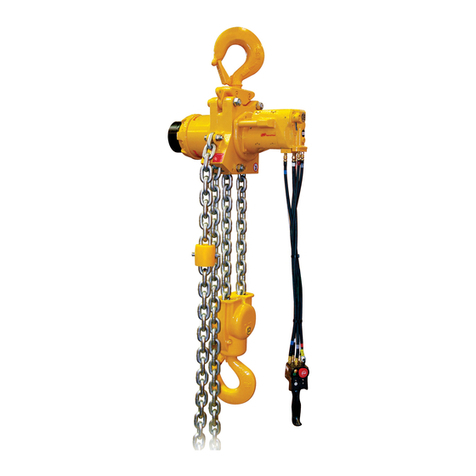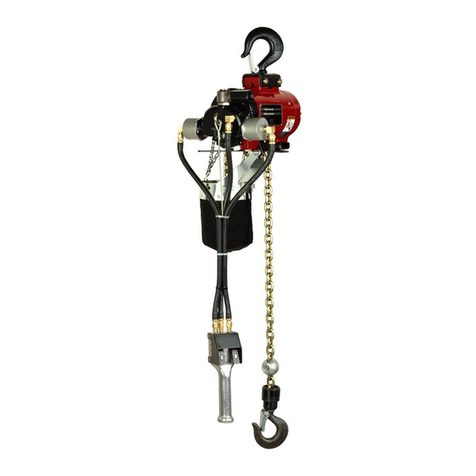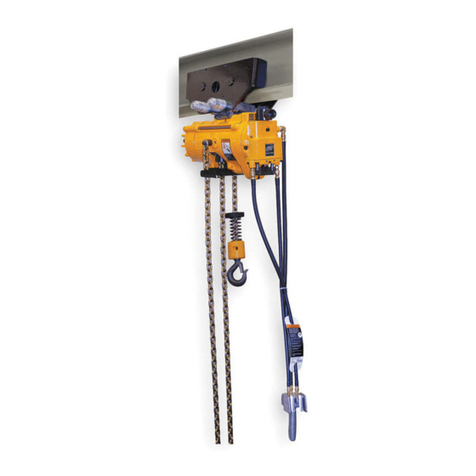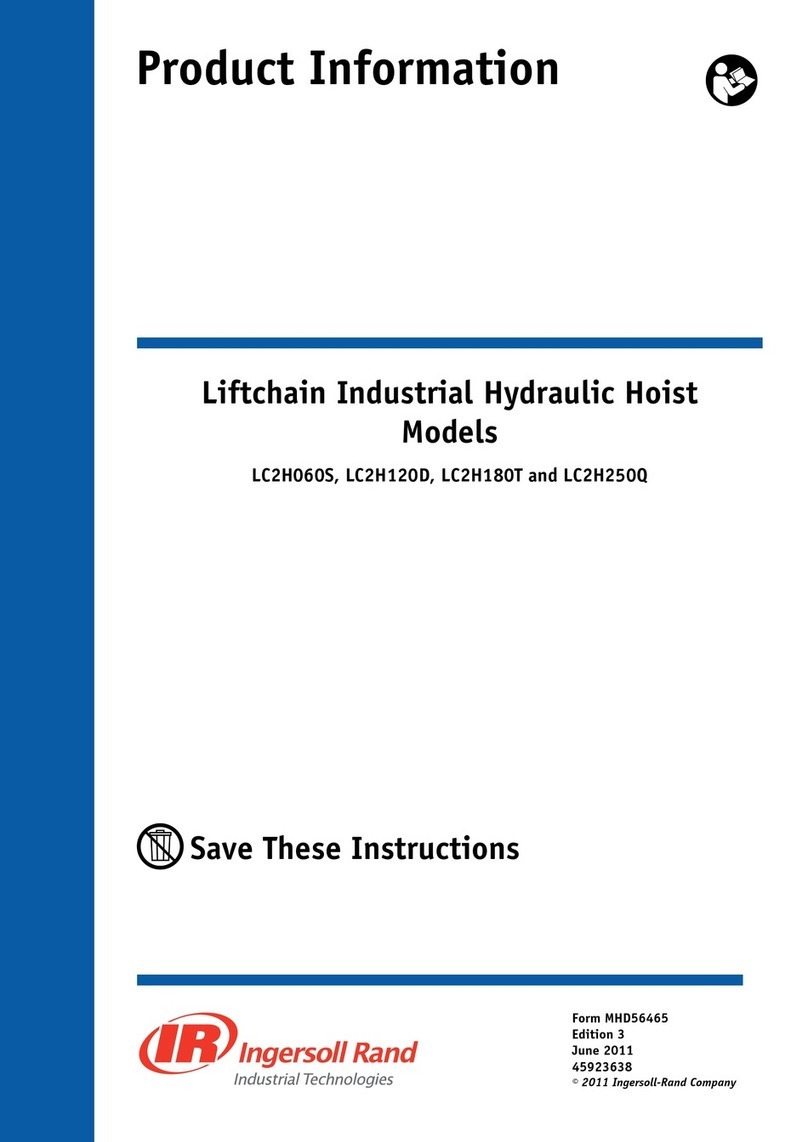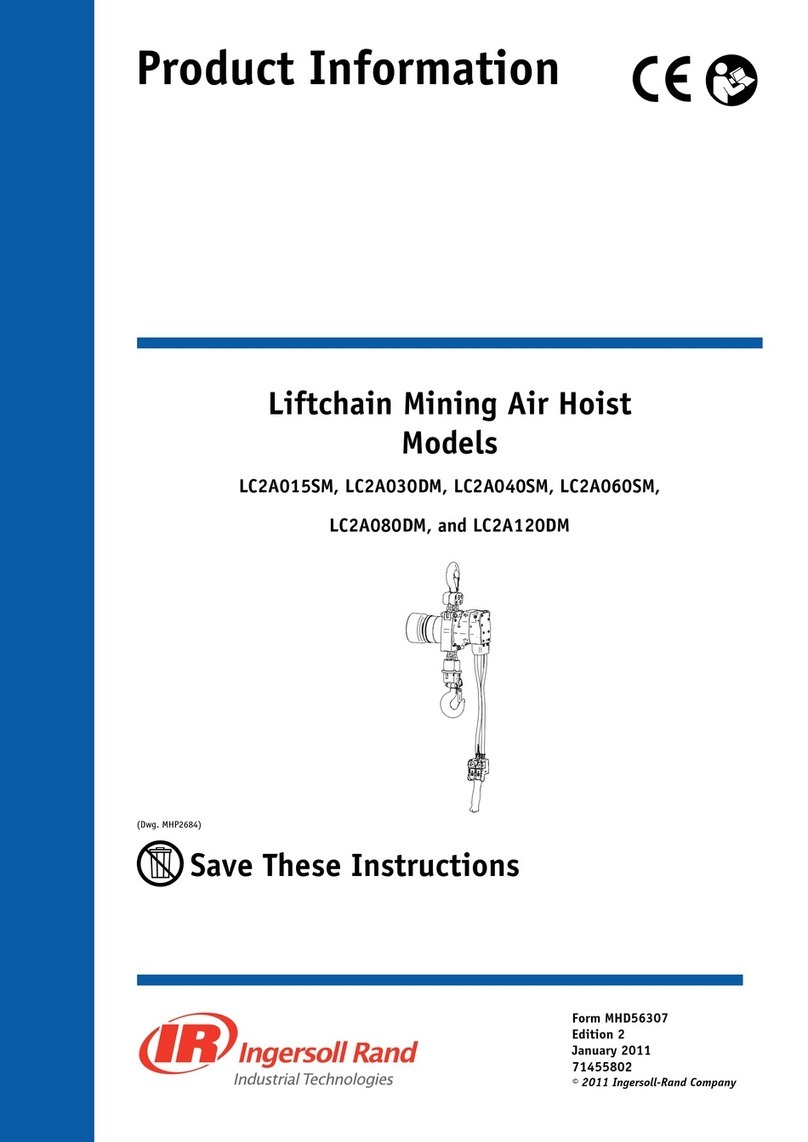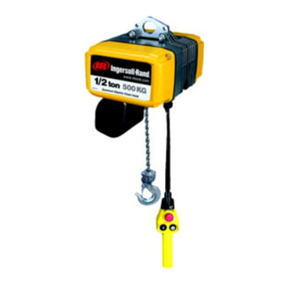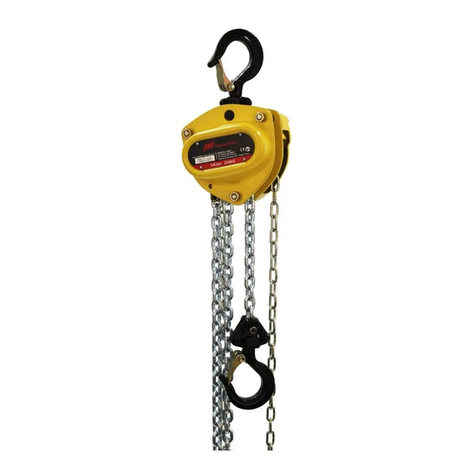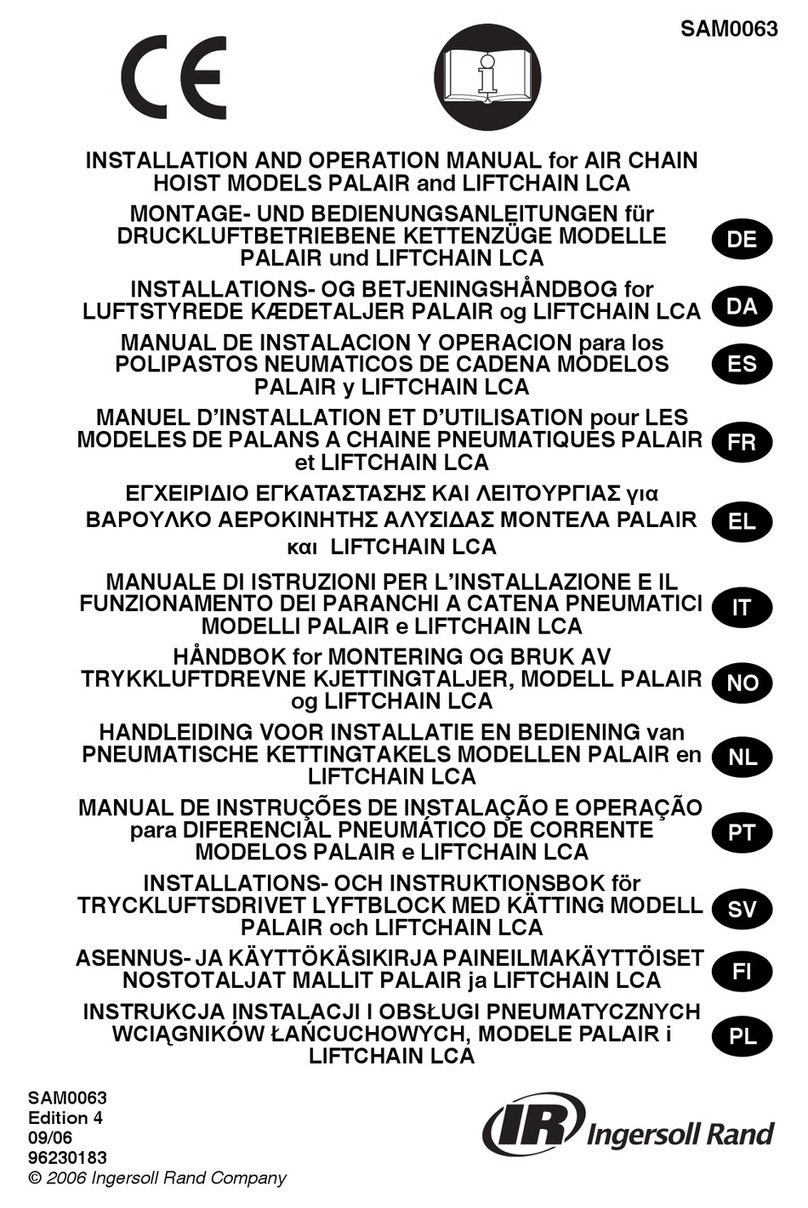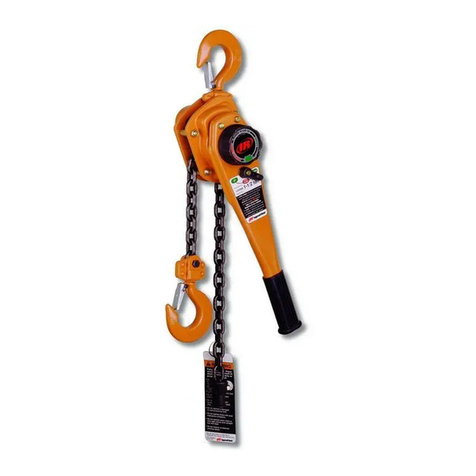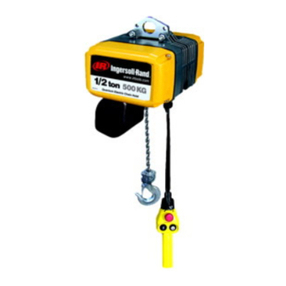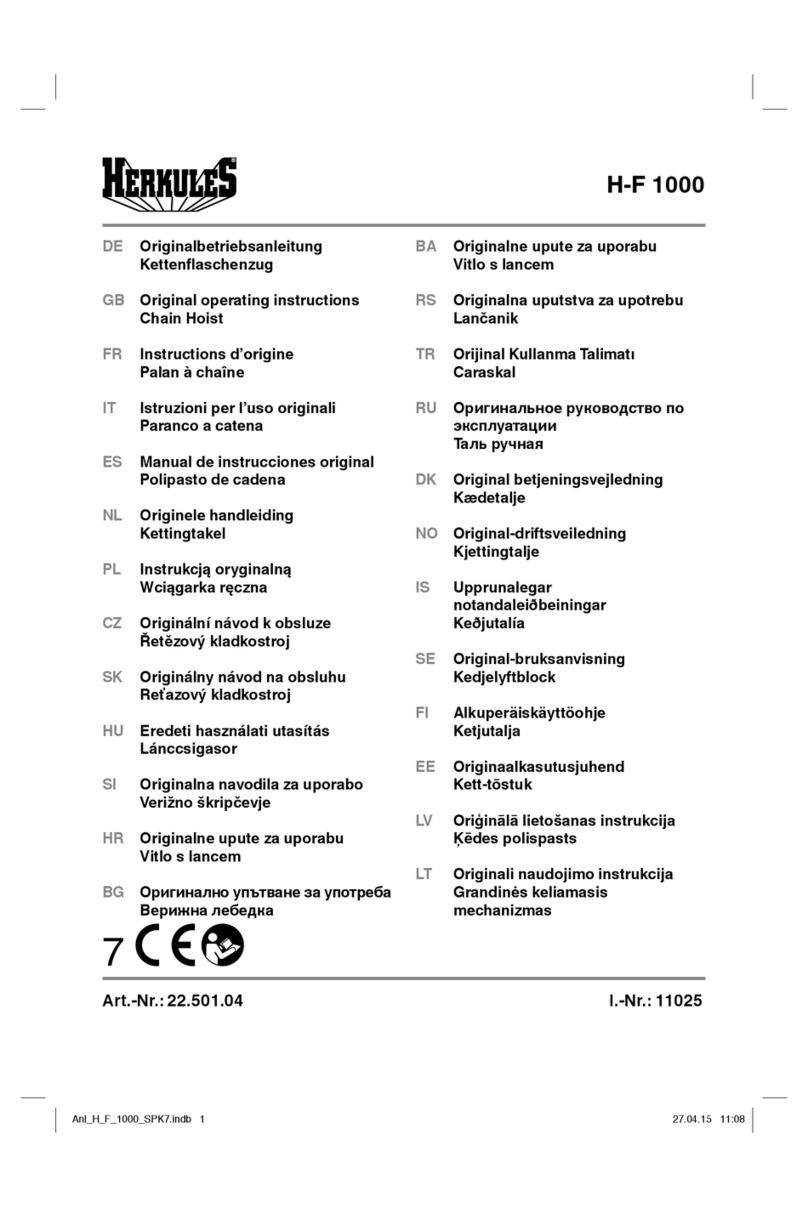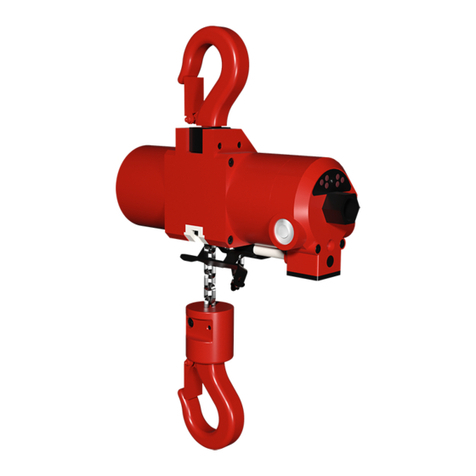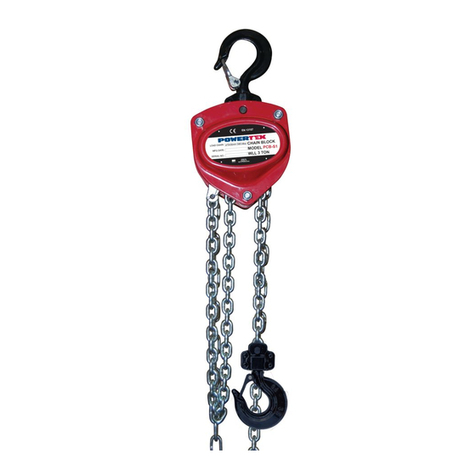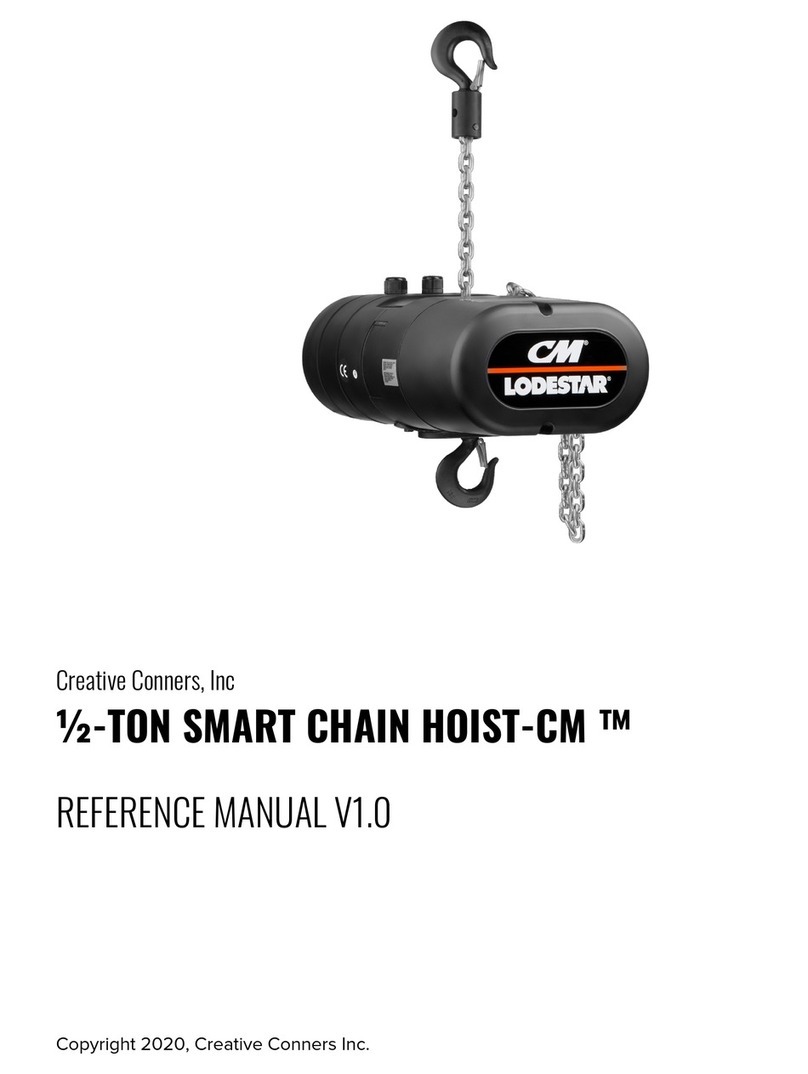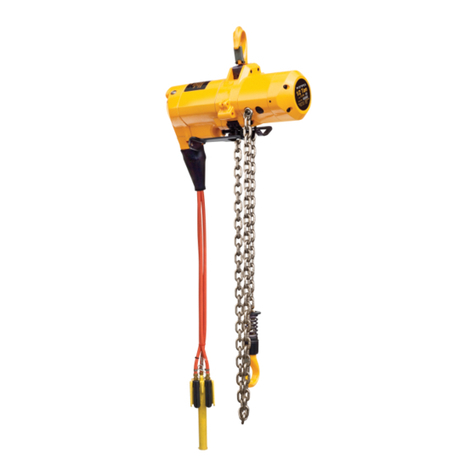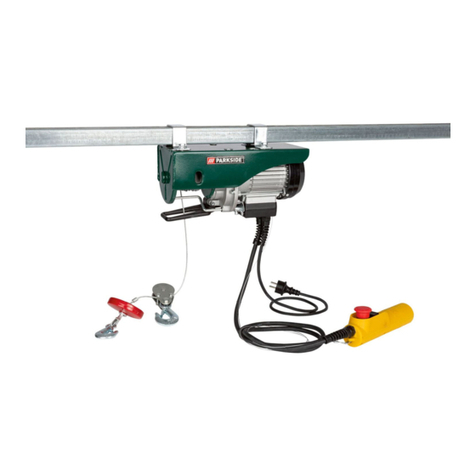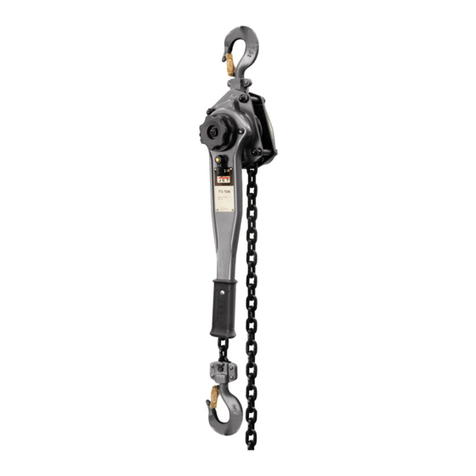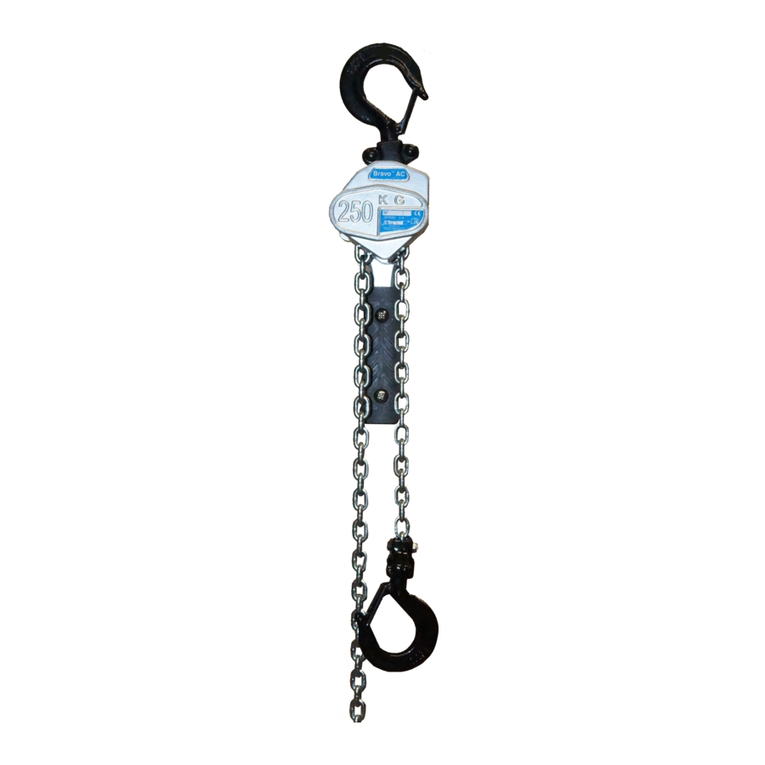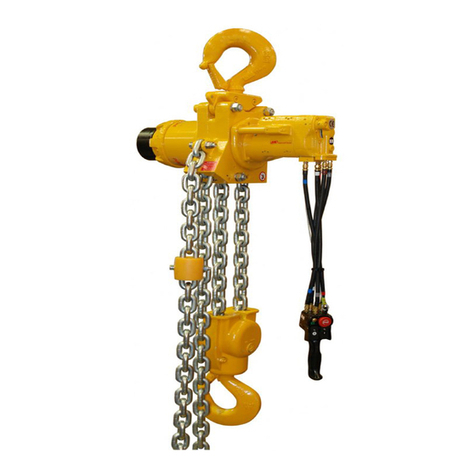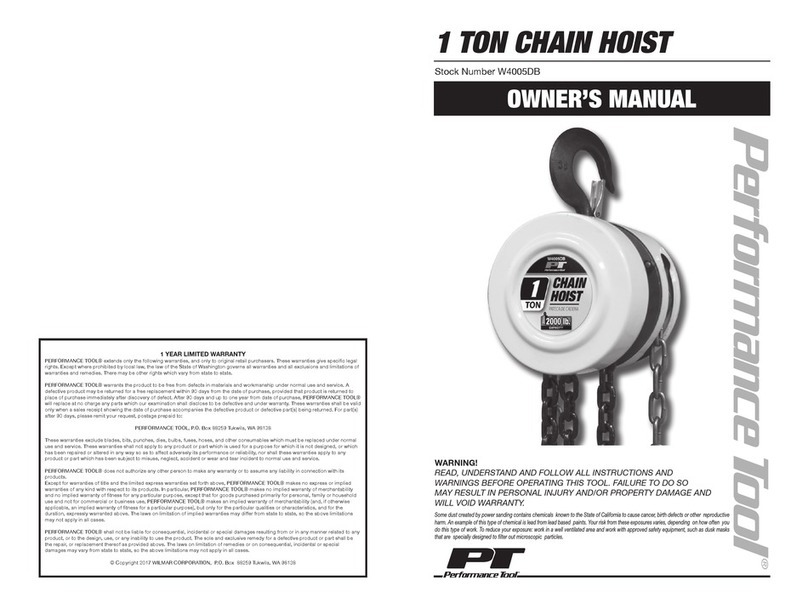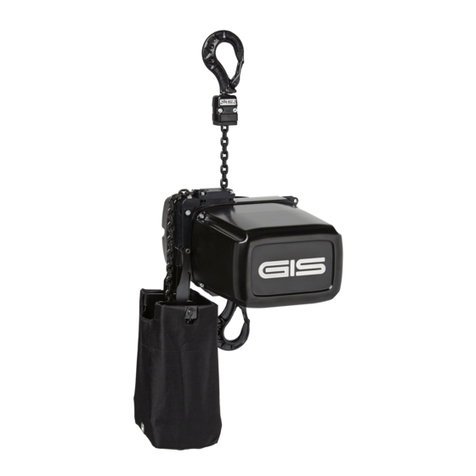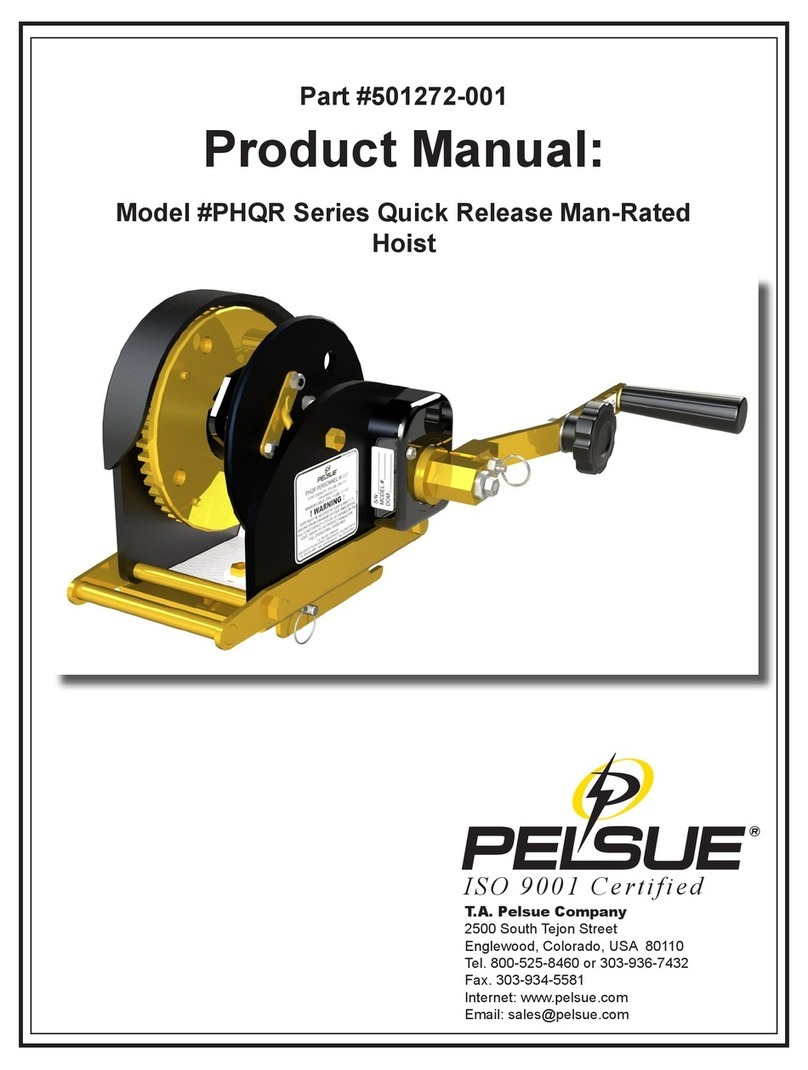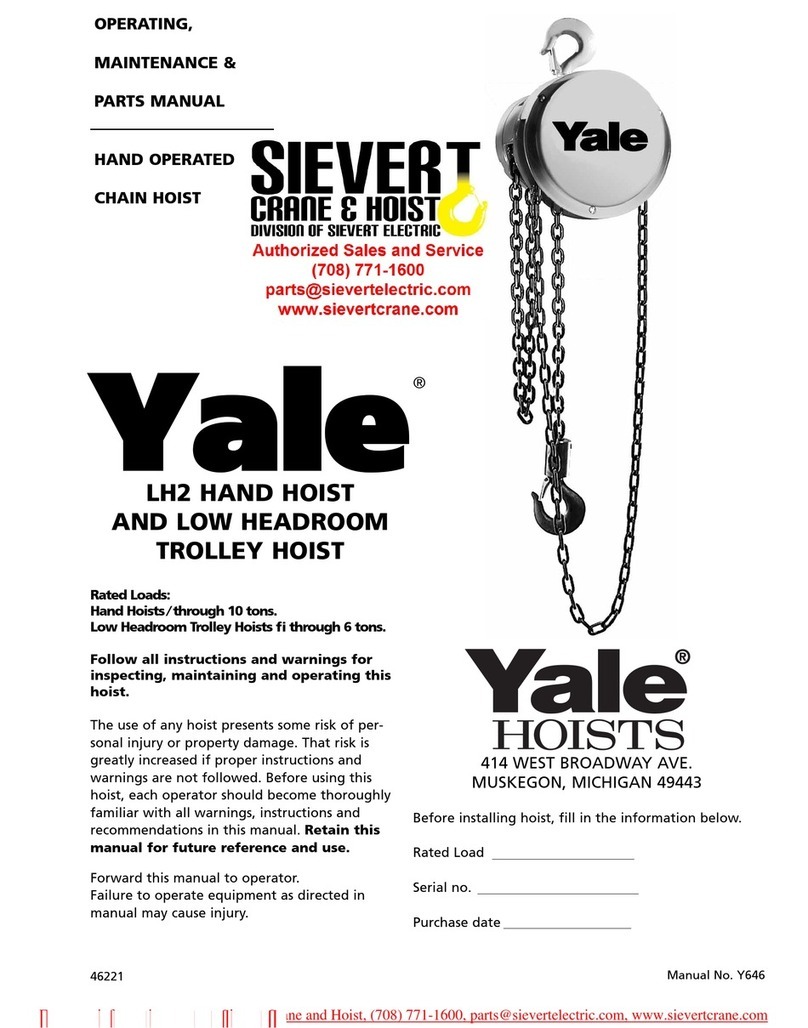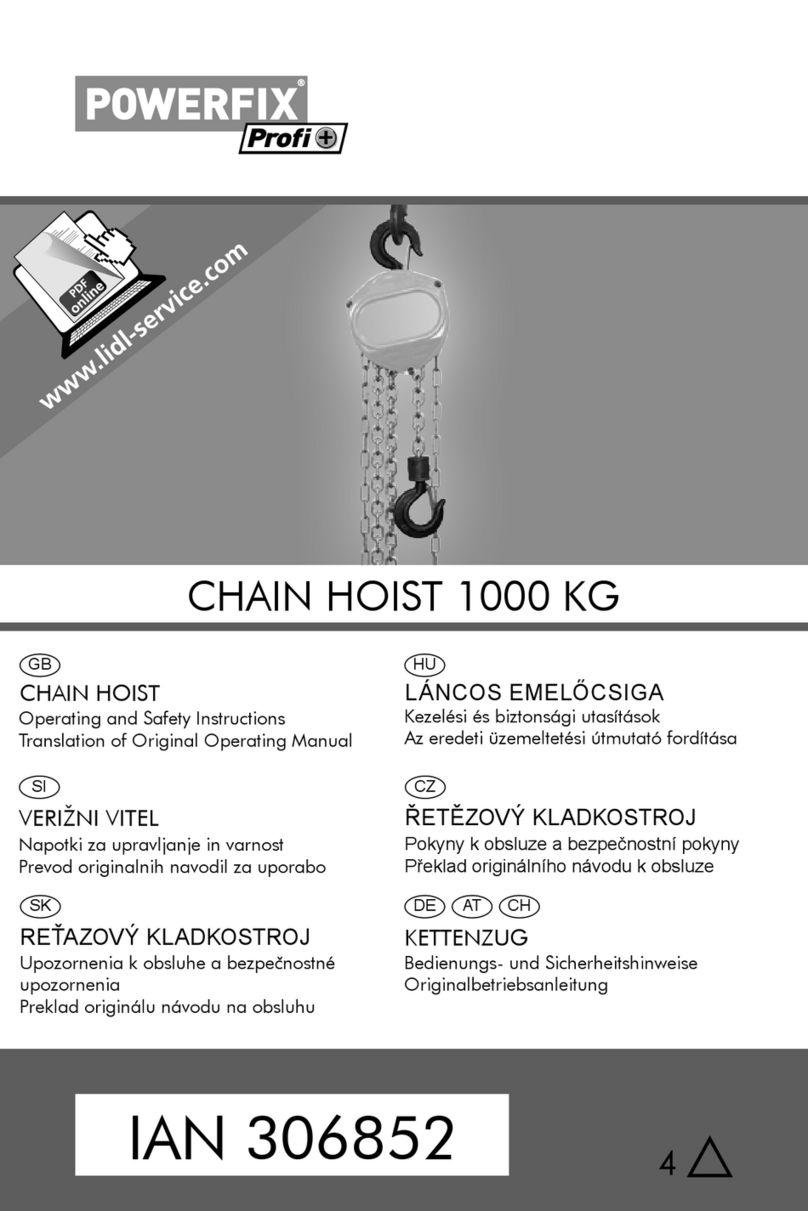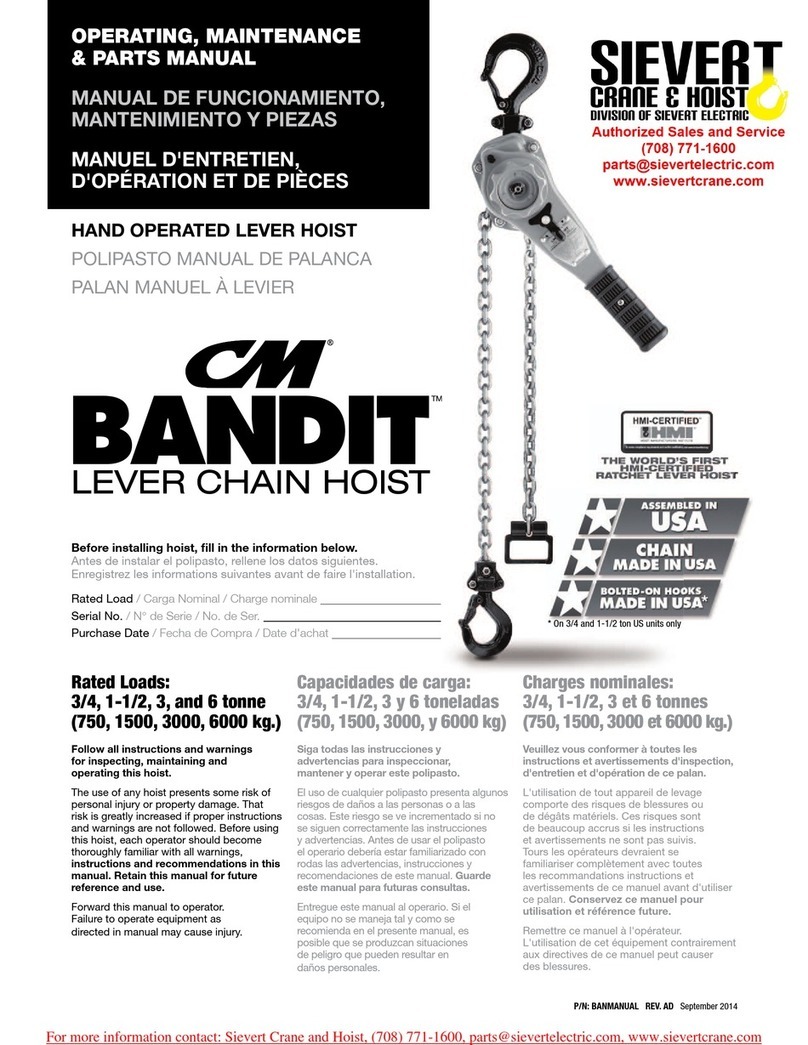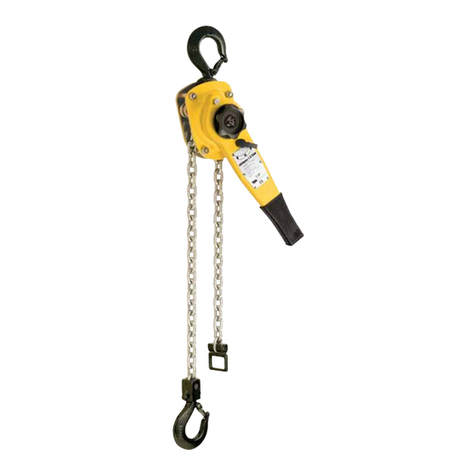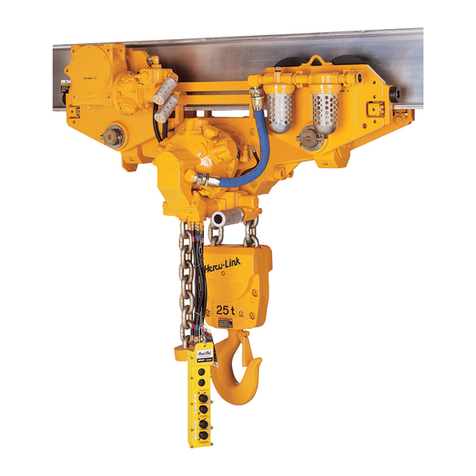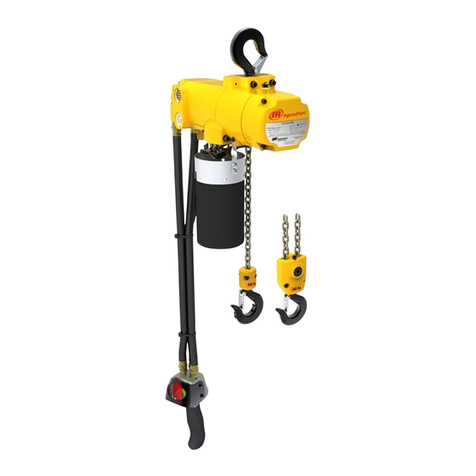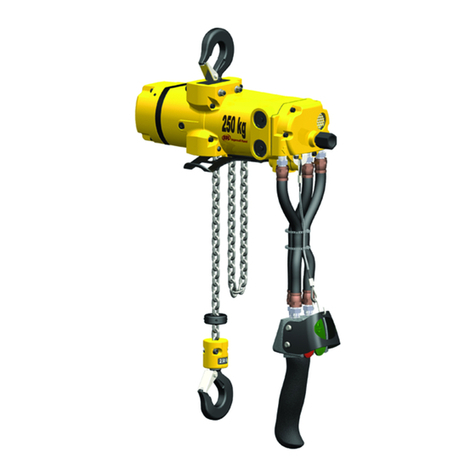
OnlyallowIngersoll Rand trainedtechnicianstoperformmaintenanceonthisproduct.ForadditionalinformationcontactIngersollRand factoryornearest
Distributor.
For additional supporting documentation refer to Table 1 ‘Product Information Manuals’ on page 2.
Manuals can be downloaded from http://www.ingersollrandproducts.com.
The use of other than genuine Ingersoll Rand replacement parts may result in safety hazards, decreased performance and increased maintenance and will invalidate all
warranties.
Original instructions are in English. Other languages are a translation of the original instructions.
Refer all communications to the nearest Ingersoll Rand Office or Distributor.
Table 1: Product Information Manuals
Publication Part/DocumentNumber Publication Part/Document
Number
Product Safety Information Manual 48488993 Product Information Manual 48489025
Product Parts Information Manual 48489041
INSPECTION
Frequent inspections should be performed on equipment in regular service. Refer
to Product Information Manual.
nPeriodic Inspection
Refer to Table 2 ‘Inspection Classifications’ on page 2 for suggested inspection
classifications for Periodic Inspection Intervals. Select conditions most appropriate
to application.
Table 2: Inspection Classifications
Conditions Usage Load Characterization
Normal <=25% duty cycle Regular
Heavy >25% duty cycle Usually medium loads,
frequent maximum loads
Severe
Loads normally less than 50% of rated load with
running time up to continuous; or, Loads normally
above 50% of rated load with running time up to 50%
of work period.
Maintain written records of periodic inspections to provide an accumulative basis
for continuing evaluation. Inspect all items listed in ‘Frequent Inspection‘ in the
Product Information Manual. Also inspect the following at the suggested intervals
recommended in Table 5 ‘Periodic Maintenance/Inspection Interval’ on page 3.
1. Fasteners. Check rivets, capscrews, nuts, cotter pins and other fasteners on
hooks and hoist body. Replace if missing and tighten or secure if loose.
2. All Components. Inspect for wear, damage, distortion, deformation and
cleanliness. If external evidence indicates the need, disassemble. Check gears,
shafts, bearings, sheaves, chain guides, springs and covers. Replace worn or
damaged parts. Clean, lubricate and reassemble.
3. Hooks. Inspecthooksforcracks.Usemagneticparticleordyepenetranttocheck
for cracks. Inspect hook retaining parts. Tighten, repair or replace if necessary.
Refer to the latest edition of ASME B30.10 (Hooks) for additional hook inspection
information
4. LoadChainSprocket.Checkfordamageorexcessivewear.Replaceifnecessary.
Observe the action of load chain feeding through hoist. Do not operate a hoist
unless load chain feeds through hoist and hook block smoothly and without
audible clicking or other evidence of binding or malfunctioning
5. Brake. Ensure proper operation. Brake must hold hoist rated capacity. If load
test indicates the need, disassemble. Brake discs must be free of oil, any grease,
unglazed and uniform in thickness. Refer to “MAINTENANCE” section for
allowable brake disc wear. Check all other brake surfaces for wear, deformation
or foreign deposits. Inspect gear teeth, pawl and pawl spring for damage. Check
that brake pawl stops counterclockwise rotation of ratchet gear. Clean and
replace damaged components as necessary.
6. Supporting Structure. Check for distortion, wear and continued ability to
support hoist and rated load.
7. Labels and Tags. Check for presence and legibility. Replace if necessary.
8. End Anchor. Ensure both ends of load chain are securely attached. Secure if
loose, repair if damaged, replace if missing. Check chain stoppers are correctly
installed and functional.
9. Trolley (if equipped). Check that the trolley wheels track beam properly and
trolley is correctly adjusted in accordance with manufacturer’s literature. Check
that wheels and beam are not excessively worn and inspect side plates for
spreading due to bending. Do not operate hoist until problem has been
determined and corrected.
10. Load Chain. Check the chain for stretching. Measure the load chain over five
link sections all along chain, paying particular attention to the most frequently
reeved links. Refer to Dwg. MHP0455 on page 2, A. Gauge Length over 'N'
links with light load suspended from hook. When any five links in the working
lengthreachesor exceeds the discardlength,replace entire chain.Referto Table
3 ‘Load Chain Normal and Discard Length’ on page 2. Always use genuine
Ingersoll Rand replacement chain. Zinc plated load chain is standard on
Liftchain hoists.
Table 3: Load Chain Normal and Discard Length
Hoist
Capacity Chain Size Normal Length Discard Length
mm inches mm inches mm
0.25 ton 3.0 X 9.0 1.77 45 1.81 46.1
0.5 ton 4.0 X 12.0 2.36 60 2.42 61.5
0.75 ton 5.0 X 15.0 2.95 75 3.03 76.9
Gauge Length over ‘N’ links with
light load suspended from hook
A
(Dwg. MHP0455)
nMaintenance Schedule
Afterconsideringtheprevious section, regarding loading, it ispossibletodetermine
the necessary maintenance intervals. Given that the load spectrum has been
determined and the duration of use has been recorded, the following chart is
intended to be used to determine service intervals for major overhauls and unit gear
box lubrication. Accordingly, the following table is given:
Table 4: Service Intervals for Major Overhauls
Load Spectrum
(LF) Characterization Time Before
Overhaul (hours) Check Oil Level (*)
(hours)
L1 - Light
0 < LF < = 0.50
Hoist is usually
subject to very
small loads and in
exceptional cases
only to maximum
loads.
6300
400
L2 - Medium
(normal)
0.5 < LF < = 0.63
Hoist is usually
subject to small
loads but rather
often to maximum
loads.
3200
L3 - Heavy
0.63 < LF < = 0.80
Hoist is usually
subject to medium
loads but
frequently to
maximum loads.
1600
L4 - Heavy
0.80 < LF < = 1.00
Hoist is usually
subject to
maximum or
almost maximum
loads.
800
(*) Operation specifics may warrant modification to this interval.
nPeriodic Maintenance
While the information in the preceding section is used for major service intervals,
many items need to be checked at greater frequency depending on usage. The
following information is provided for that purpose, but it is important to note that
the information in the preceding section, regarding hours of service, is applicable in
all conditions of use. Refer to Table 5 ‘Periodic Maintenance/Inspection Interval’
on page 3.
2Form 48496376 Edition 1
